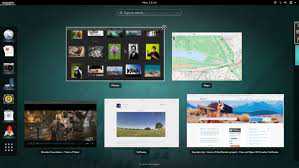In this article, I will explain you how to try Linux with ease. You will discover the different Linux installation types, namely on CD/DVD, USB stick and on hard disk.

Usually “Linux” is used as a synonym for the “Linux distributions”. All Linux distributions are operating systems based on the Linux kernel. The distributions are maintained by companies or by communities of programmers.
The distributions are designed for specific requirements.
There are distributions for the average user, like : Ubuntu, Linux Mint, Mageia, etc.
Some others are more technically, like : Gentoo, Linux from scratch, etc.
There are also distributions for enterprises, like : SUSE Linux Enterprise, Red Hat Enterprise Linux, etc.
Download Linux
Before you download a distribution you like, you have to know which architecture your PC has (32 bit or 64 bit). If you don’t know the architecture, choose 32 bit – this works also on 64 bit machines.
Some distributions ask you to choose the desktop you want to install (example : Gnome, KDE, etc.). If you are not sure what to choose, select the default desktop.
Download the “ISO image” file of the distribution of your choice from their Website.
Try a Linux live CD/DVD
The easiest solution is to burn a Linux live CD/DVD. This allows you to try Linux from the CD/DVD without installing it on your hard drive.
Burn the downloaded “ISO image” file on a CD/DVD with a burning program like Nero or ImgBurn. If you have Windows 7 or 8, put the mouse over the “ISO image” file, click the right mouse button and select “burn image to CD”.
Configure your PC in order to boot from the optical drive. For that, go into the BIOS in pressing F2, F12 or the delete key on start up (which key you have to use depends on your BIOS). In the BIOS menu change the boot order, the CD/DVD must show up prior to the hard disk.
Insert the Linux live CD/DVD into the drive and restart the PC. You will see the Linux startup screen now.
You can try and explore Linux now without having installed it on the hard drive. If you take the CD/DVD out of your optical drive and restart your PC, you can use your PC as usual.
Try Linux on a USB stick
The procedure for testing Linux on a USB stick is similar to the installation on a CD/DVD.
BUT there is a big difference! You can save the settings and changes you made on Linux on the USB stick or even save your documents on it.
There is a program to convert the “ISO image” file and save the result on the USB stick in order to have a bootable and working Linux. The program is UNetbootin. If your USB stick has enough capacity, you can define some space to save your documents. The minimum size of the stick is 1 GB for testing purposes.
Configure your PC in order to boot from the USB stick.
Insert the USB stick into the PC and restart it. You will see the Linux startup screen now.
You can try and explore Linux now without having installed it on the hard drive. If you remove the USB stick and restart your PC, you can use your PC as usual.
Try Linux on Windows
You can install Linux on Windows without the risk to loose your data. With that, Linux seems to run like another program on Windows. You can install and uninstall Linux without affecting negatively your Windows installation.
You need a program called “virtual machine” in order to install Linux on Windows. This means, you install Linux on the virtual machine, which is running on Windows. Virtual machine programs are : VitualBox, VMware, etc.
Try Linux on dualboot
When you use Linux on dualboot, you install it in parallel with Windows on the PC’s hard drive. With this type of installation, you can use the full potential of Linux. On the speed level, this is the best solution in comparison to the others mentioned before.
Before you begin, check if you have at least 5 MB of free space for Linux on your hard drive.
Next you should make a backup of all your data for security reasons!
Now defragment Windows on your hard drive.
At this point you can start the installation process of Linux. During the installation, you have to reduce the size of the Windows partition in order to have enough space for Linux. At the end of the installation, you will be asked if you want to boot both operating systems or just Linux; select both for dualboot.
When you start your PC now, you will see a menu with the possibility to start Windows or Linux.
Try Linux on dualboot with UEFI and “secure boot”
The procedure for the installation is similar to the installation mentioned above.
The easiest method
Choose a distribution which is compatible with UEFI and “secure boot” like : Fedora, Ubuntu et openSUSE, etc. Follow the installation instructions of the selected distribution.
The more complicated methods
The two following methods need some tweaks in order to let Windows working normally.
You can install Linux on a PC in deactivating “secure boot” only. Now you have more installable distributions compared with the method described above.
When you are deactivating UEFI and “secure boot” and you are activating “BIOS legacy”, all distributions can be installed on this PC.
The same article in French
– get post updates by subscribing to our e-mail list
– share on social media :
thanks for this article ! I will definitely try Linux for my old desktop machine.
Hi Gordon, glad you liked my article. If you have questions, I will answer them. Good luck with the installation !